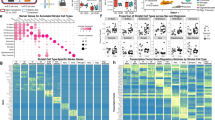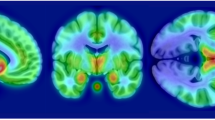Abstract
Experimental and clinical studies suggest an involvement of the opioid neuropeptide system in psychiatric disorders. Notably, opioid peptide immunoreactivity is altered in the cerebrospinal fluid of chronic schizophrenics and manic-depressive subjects.1–3 Despite these clinical findings, few postmortem investigations4,5 have examined the association of endogenous opioid neuropeptides with schizophrenia and suicide. Anatomically, a tight interaction exists within the neostriatum between the opioid peptide (dynorphin and enkephalin) system and classical neurotransmitters such as dopamine6 which has been implicated in both the psychotic symptoms and the cognitive deficits that characterize schizophrenia (see review).7 The neostriatum is differentially organized into patch and matrix neurochemical mosaic compartments anatomically connected to limbic- and sensorimotor-related brain regions, respectively.6,8 Moreover, the human neostriatum is characterized by a heterogenous expression of the prodynorphin opioid gene: high in the patch, but low in the matrix compartment.9,10 The present results show for the first time a differential alteration of prodynorphin within distinct striatal compartments in postmortem tissue from nonschizophrenic suicide subjects. The prodynorphin patch/matrix mRNA expression was elevated in the caudate nucleus of suicide subjects as compared to normal controls and schizophrenics in which no alterations in opioid peptides or D1 and D2 mRNA expression were apparent. Altogether the findings suggest that discrete dysfunction of the endogenous opioid dynorphin system might contribute to depression and the risk of suicide in nonschizophrenic subjects.
This is a preview of subscription content, access via your institution
Access options
Subscribe to this journal
Receive 12 print issues and online access
$259.00 per year
only $21.58 per issue
Buy this article
- Purchase on Springer Link
- Instant access to full article PDF
Prices may be subject to local taxes which are calculated during checkout
Similar content being viewed by others
Author information
Authors and Affiliations
Rights and permissions
About this article
Cite this article
Hurd, Y., Herman, M., Hyde, T. et al. Prodynorphin mRNA expression is increased in the patch vs matrix compartment of the caudate nucleus in suicide subjects. Mol Psychiatry 2, 495–500 (1997). https://doi.org/10.1038/sj.mp.4000319
Received:
Accepted:
Issue Date:
DOI: https://doi.org/10.1038/sj.mp.4000319
Keywords
This article is cited by
-
Kappa opioid receptor modulation of excitatory drive onto nucleus accumbens fast-spiking interneurons
Neuropsychopharmacology (2021)
-
Data-driven analysis of kappa opioid receptor binding in major depressive disorder measured by positron emission tomography
Translational Psychiatry (2021)
-
Suicide Risk and Addiction: The Impact of Alcohol and Opioid Use Disorders
Current Addiction Reports (2021)
-
The neural correlates of low social integration as a risk factor for suicide
European Archives of Psychiatry and Clinical Neuroscience (2020)
-
Antidepressant-like Effects of Buprenorphine are Mediated by Kappa Opioid Receptors
Neuropsychopharmacology (2016)



